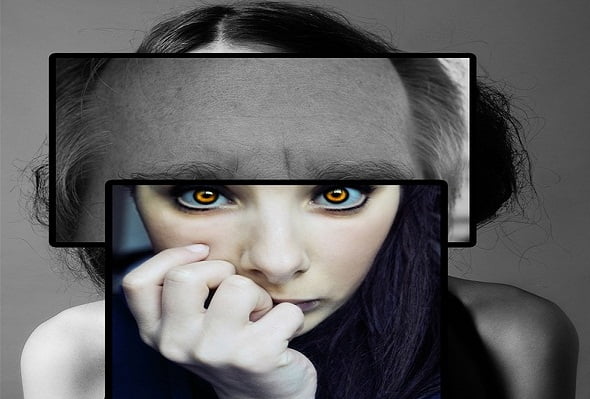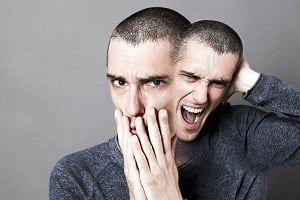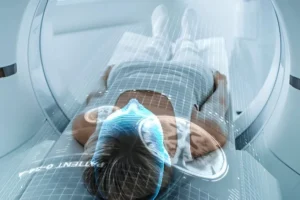Living With Paranoid Schizophrenia
- Updated on: Jul 13, 2024
- 6 min Read
- Published on Oct 3, 2019


What is paranoid schizophrenia?
Definition of schizophrenia: Paranoid schizophrenia is perhaps the most common of all types of schizophrenia. It is defined as a long term mental disorder in which a person is deprived of reality. It is a chronic condition that requires a lifelong treatment. The illness usually starts in late adolescence or young adulthood. Paranoid Schizophrenia is a paranoid neuropsychiatric disorder.
Paranoid schizophrenia statistics and facts
- About 1.5 million people are diagnosed with paranoid schizophrenia in the world every year
- Men are generally diagnosed with paranoid schizophrenia between the age group of 18-25
- Females are mostly diagnosed with the disease at the age group of 25-30
- People with paranoid schizophrenia talk senseless and hear voices that don’t really exist
- Paranoid schizophrenics can sit for hours without moving
- Schizophrenic’s relatives such as a parent or a sibling have a 10% chance of developing the disease
- Men and women are affected by it equally.
- The disorder occurs in all races
- People with schizophrenia are non-violent
Causes of paranoid schizophrenia
Causes of paranoid schizophrenia are still unknown. Scientists believe that a combination of genetic factors, brain chemistry, and your environment may be responsible for the development of paranoid schizophrenia.
Problems with certain naturally occurring brain chemicals, such as neurotransmitters called dopamine and glutamate, may contribute to paranoid schizophrenia. Researchers consider that schizophrenia is a brain disease based on various evidences and imaging studies of brain for people with paranoid schizophrenia.
Paranoia can arise in certain other mental health conditions too, such as:
- Depression: It can increase severity of the disease
- Bipolar disorder: It is a mental disorder which can lead to mood swings
- Delusional disorder: It is a type of mental illness that are characterized by false beliefs
- Delusions or hallucinations disobeying the natural laws of basic thought processes
Who gets paranoid schizophrenia?
Paranoid schizophrenia is the most common form of schizophrenia and affects people in the age group of 15 to 25 years mostly. The onset of schizophrenia usually starts at puberty. Brain changes are seen during puberty as hormones play a major role in this stage.
Based on some research, women tend to get schizophrenia later than men because they go through puberty earlier and the estrogen hormone somehow protects them.
More: Schizophrenic Brain Vs Normal Brain
More: The Brain: Anatomy And Functions
Onset of paranoid schizophrenia
Schizophrenic symptoms usually begin in the mid to late 20s. Early-onset of schizophrenia occurs before the age of 18 years. Very early-onset of schizophrenia in children, who are younger than 13 years, is extremely rare.
Drugs causing paranoid schizophrenia
Some street drugs particularly cannabis, methamphetamine and cocaine also believed to cause schizophrenia.
Is paranoid schizophrenia hereditary?
Certain genetic as well as environmental factors can lead to paranoia. Family history is also responsible for it. There is a 10% chance that the problem will transfer to the next generation if any of the family members already has a paranoid schizophrenia condition. According to a study, there is higher level of norpinephrine in paranoids as compared to non paranoids.
Genes play an immense role in paranoid schizophrenia. There are mutations or changes in the DNA that can lead to the mental illness. The studies related to twins reveal that if one identical twin has paranoid schizophrenia, there is a 30-50% chance that the other twin will have it as well. If a fraternal twin has paranoid schizophrenia, then the chances are increased by 15% for the disease to occur.
Paranoid schizophrenia is more dependent on mother’s gene than a father’s gene. As a father gets older, sperm develops new mutations that can lead to an increased risk of paranoid schizophrenia. These new DNA conformations elevate the chances of paranoid schizophrenia genes in the schizophrenic population.
Etiology of paranoid schizophrenia
Many new theories suggest that paranoid schizophrenia is a multifaceted disorder while earlier theories suggest that an abnormal expression of dopamine is the main cause of the delusions that are commonly found in many patients with this mental disorder.
However, further studies have shown inferences involving peculiarities and defects in the GABA, and glutamate pathways. However, in adjunct to this, new studies have revealed that long-term use of cannabis may also be the causative agent for the development of this disorder.
Diagnosis of paranoid schizophrenia
A diagnosis of paranoid schizophrenia requires a series of tests and evaluations. Some of the common paranoid schizophrenia tests used for diagnosis:
- Blood tests and other medical tests
- Medical history of the patient is observed
- Neuroimaging results and physical test results
Early signs and symptoms of paranoid schizophrenia
Since paranoid schizophrenia is a psychotic disorder, delusions are firm beliefs and seem real to people suffering from paranoid schizophrenia. Some of the delusions are:
- hurt by colleagues or co-workers
- cheated by spouse
- someone trying to spy secretly
- harassed by neighbors
These firm viewpoints can cause problems in personal and sociological relationships. People also experience minor auditory hallucinations. For example, you may hear voices and sounds that make you annoy. Paranoid schizophrenia symptoms occur normally between 16 to 30 years of age.
Early signs of paranoid schizophrenia are:
- Depression, social abstinence
- Extremity to criticism
- Deteriorated hygienic conditions including personal hygiene
- Staring at someone without expressions
- Excessive crying and excessive laughter
- Excess of sleep; insomnia and lack of concentrations
Indications (symptoms) may upshot from an imbalance of dopamine and serotonin, both of which are neurotransmitters. Certain physical changes were also responsible for these paranoid outcomes.
People suffering from schizophrenia have a dissimilar experience of paranoia. Their paranoid opinions are very sophisticated and reaching to extremes. They create a belief that the entire world is spying on them.
Psychiatrists call these kinds of beliefs as persecutory delusions. People with paranoid schizophrenia believe that antipsychotic medicines prescribed to them by the doctors are poisonous and may kill them and they ultimately stop their medication.
Generally, half of the population diagnosed with this disorder does not believe that they are sick. People suffering with paranoid schizophrenia may harm themselves. Teenagers also experience some symptoms of paranoid schizophrenia and can be observed by low performance in their academics.
Symptoms of paranoid schizophrenia in females
Females may develop paranoid schizophrenia later than men. Common symptoms of paranoid schizophrenia in females are:
- Delusions
- Hallucinations
- Negative symptoms
- Suicidal thoughts
Symptoms of paranoid schizophrenia in children
Children may develop paranoid schizophrenia. They generally show these behaviors:
- Delay in verbal communication
- Late crawling
- Delay in walking
- Rocking or arm flapping
How is paranoid schizophrenia different from general schizophrenia?
Paranoid schizophrenia is different from general schizophrenia in the context that, in paranoid schizophrenia, people experience delusions and auditory hallucinations while in general schizophrenia, hallucinations (seeing, hearing, and listening) to things that don’t exist and delusions are observed.
Paranoid delusions, auditory hallucinations and some minor negative symptoms make paranoid schizophrenia different from general schizophrenia.
Treatment of paranoid schizophrenia
Options available for paranoid schizophrenia treatment are:
- Antipsychotic medicines are recommended by doctors as they are thought to control symptoms by affecting brain’s neurotransmitter i.e. dopamine.
- Some of the antipsychotic drugs are chlorpromazine, haloperidol.
- Individual therapy is recommended by psychiatrists who help to improve thinking patterns and to cope up with stress.
- Counseling is provided to schizophrenic patients to manage their condition.
- For adults who do not respond to drug therapy, electroconvulsive therapy is considered.
- If diagnosed early, medications and therapies produce successful effect but hospitalization may become necessary in severe cases.
Therapies for paranoid schizophrenia
Individual psychotherapy: A therapist or a psychiatrist teaches how to deal with disorganized speech or behavior
Cognitive behavior therapy (CBT): A therapist enables paranoid schizophrenic patients to deal with “voices” and hallucinations. Combining CBT sessions and medication, one can easily tell what activates his or her psychotic episodes and how to minimize or stop them.
Cognitive enhancement therapy (CET): It is also called cognitive remediation. It makes one learn how to recognize social circles, improve their attention, memory, and ability to arrange their thoughts. Combined computer-based training and group sessions are effective in paranoid schizophrenia.
Psychosocial Therapy: How to become a major part of a community is taught in these sessions of psychosocial therapy.
Social skills training: Being social is a major part of human life and people are taught to be social in these trainings.
Is paranoid schizophrenia curable?
Currently, as per researchers there is no cure for paranoid schizophrenia. Doctors are still trying to find the cure for this disease. Antipsychotic drugs are recommended by doctors and some effective therapies are also practiced to manage the symptoms of paranoid schizophrenia.
How we can help people with paranoid schizophrenia
- Avoid things or tasks that scares a person
- Lights should be kept on if a person is scared of darkness
- Talk about the fears of a person and try not to argue regarding any of their statements
- Helping hand should be put forward to ease the person in every possible way
Pathophysiology of paranoid schizophrenia
Pathophysiology of schizophrenia is the key to develop the most effectual treatment for the disease, and is the key goal of many researchers. Science is making magnificent advances in this field. The exact pathophysiology of paranoid schizophrenia is not understood, and henceforth, two theories are mentioned here to support this context:
- dopamine hypothesis
- glutamate hypothesis
Abnormality in the dopamine levels of schizophrenic brain clears that dopamine is contributing in some way in the pathophysiology of paranoid schizophrenia. Other neurotransmitters such as glutamate, serotonin and gamma-amino butyric acid (GABA) also play a major role.
Dopamine hypothesis for paranoid schizophrenia
The basis for the hypothesis of dopamine of paranoid schizophrenia came from studies taken from post mortem reports, finding increased striatal availability of D1/D2 receptors in the striatum, as well as studies finding increased CSF levels of dopamine metabolites. Eventually, many antipsychotics were found to have affinity for D2 receptors.
Modern investigations of the hypothesis suggested a link between striatal dormation of dopamine and positive symptoms, as well as elevated and decreased dopamine transmission in subcortical and cortical regions respectively.
Glutamate hypothesis
Besides the dopamine hypothesis, neurotransmitter glutamate and the decreased function of the NMDA glutamate receptor in the pathophysiology of paranoid schizophrenia has also been highlighted for paranoid schizophrenia. Lower levels of glutamate receptor found in postmortem brains of people earlier diagnosed with paranoid schizophrenia and the revelations that glutamate blocking drugs such as phencyclidine and ketamine can produce symptoms similar to that of paranoid schizophrenia provide evidences for this theory to believe.












